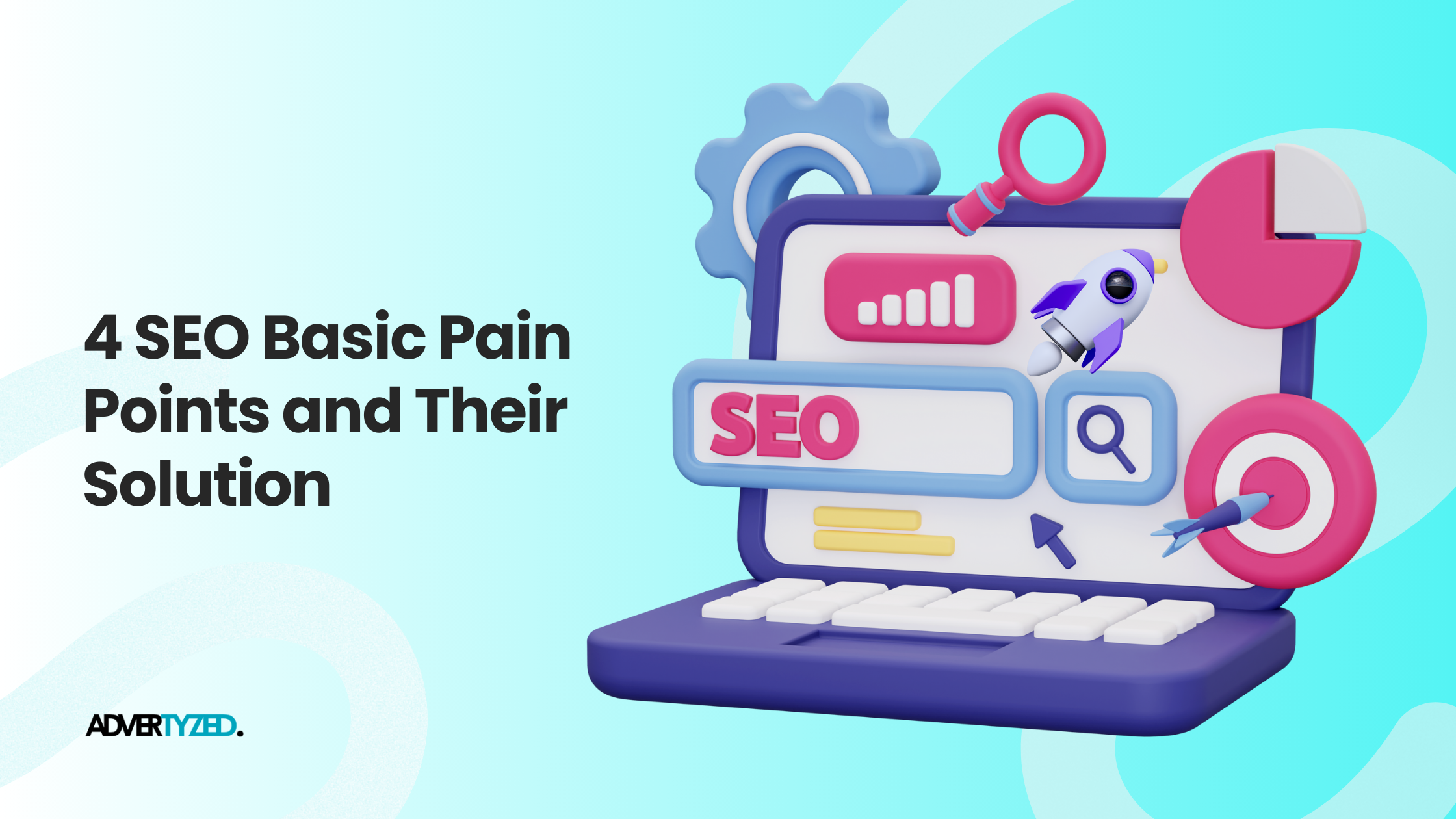Spearheading SEO efforts for a small business can be exciting and stressful. At one end, you plan to scale your business and on the other hand, you demand monetary compensation for your SEO efforts. Juggling both responsibilities can be difficult if you don’t address basic SEO pain points.
In this blog post, we’ll address 4 basic SEO pain points and share their solutions. So keep reading to find a quick fix for your SEO challenges.
4 Basic SEO Pain Points Resolution Techniques in 2024
Some of the biggest challenges faced by search engine specialists and businesses today is securing search engine real estate. With AI in the game, it’s difficult to find your space, and not only SEO but content creation challenges have their game up a notch!
With content at scale easily accessible for novice writers, the basic SEO pain points of 2024 seem like advanced SEO strategies. Nevertheless, we’ve made it pretty simple and digestible for you by sharing our tried and tested SEO pain point resolution techniques.
Search Intent
One of the biggest SEO and content creation challenges is understanding search intent. Since AI doesn’t do a good job of addressing search intent, human writers can have an edge over generative content. But to earn this competitive edge, you need to understand search intent.
Simply put, search intent is the reason behind searching a phrase on search engines. For instance, if someone searches for “Best cookies recipe in 5 minutes” they’re probably looking for a short blog that explains how to make cookies in 5 minutes.
Similarly, if you search basic SEO pain points on Google, you’ll find more content about pain point SEO, and both are different topics. To figure out search intent you need to manually search your keyword on Google and see the results. Make sure your blog’s intent matches what’s coming up in the results.
Keyword Research
Finding keywords is easy if you have access to tools like Ahrefs and SEMRush. But finding the right keywords to rank for is a whole new ballgame. Keyword research falls into 4 categories,
- International keyword research
- Local keyword research
- B2B keyword research
- B2C keyword research
While there are other categories like affiliate marketing keyword research and ecommerce keyword research they fall under the umbrella of B2B and B2C keyword research.
1. International Keyword Research
International keyword research targets terms that are globally searched. For instance, if you sell website design and development services and want to rank globally, you can use a basic variation of the keyword.
2. Local Keyword Research
Local keyword research is finding keywords that are being searched in your locality. Common terms that localize keywords are “near me” or “city or area name” for instance, website design and development near me or website design and development in Denver.
3. B2B Keyword Research
B2B keyword research is a very different category. They entail keywords that enterprise clients would search for. These keywords are slightly different and target large-scale organizations. A common example would be “website design solution” not service.
4. B2C Keyword Research
B2C keyword research focuses on identifying terms that individual customers might search to fulfill their needs. Good examples of B2C keyword research would be “affordable website design and development service”

Content Creation
Content creation challenges are a strong part of SEO because content makes your website rank. Without proper content on your site, you won’t gain search engine visibility. While search engines index AI generative content, the majority of generative content is removed at the same time.
Human connection is important for search engines because it fuels their search results. In addition, AI content doesn’t meet search intent (in most cases). Hence, web and blog content must be streamlined with the reader in mind, not human.
The easiest way to write human-centric content is to research Chat GPT. The most simple prompt you can use to collect valuable information is,
“Hey Chat GPT, can you highlight 5 common problems in/with ________.” Once you get an answer you can search related keywords and shape your blog post. This is a base prompt and you can customize it to your liking. The more details you share, the better GPT will respond.
Link Building
Link building is very much alive in 2024 and it’s not going anywhere. It’s one of the most important valuation metrics for search engines to determine if your website is worth ranking. However, link building isn’t as simple as it used to be.
With rising content challenges and basic SEO pain points, it can be hard to secure backlinks for your site when it’s in the early days. However, you can start with free guest posts. These sites don’t charge anything but securing a spot can be challenging due to excessive guest post submissions.
Wrapping It Up
Navigating the complex landscape of SEO doesn’t have to feel overwhelming. Whether you’re tackling SEO keyword research services, content challenges, or the common pain points that come with optimizing for search engines, understanding the core issues is the first step to success. By addressing search intent, streamlining your keyword research, crafting human-centric content, and leveraging effective link-building strategies, you’re setting yourself up to overcome SEO challenges in 2024 and beyond.
Remember, the road to ranking success is a marathon, not a sprint. Take it one step at a time, keep refining your strategy, and stay on top of the ever-evolving SEO landscape. By being proactive and addressing your SEO pain points head-on, you can turn these challenges into opportunities for growth and higher visibility online. Happy optimizing!



